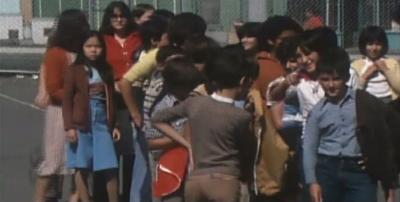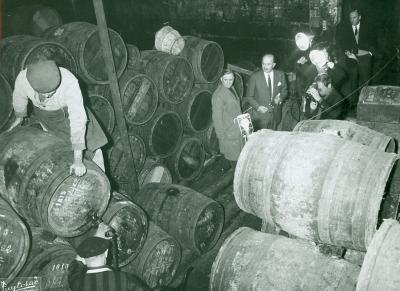Cantonese opera and contemporary art exhibitions are among the highlights of the rich history of Chinese visual and performing arts in Montréal.
Cantonese opera: Lifting spirits in a diaspora community
Opéra cantonais
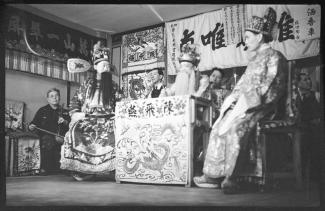
The earliest traces of Chinese artistic expression in Montréal date back to the early 1900s. Social circumstances hampered the emergence of an arts scene in the newly established Chinese community: working long hours in difficult, low-paid jobs, Chinese newcomers had little time to devote to art. There was, however, a demand for cultural pastimes geared to the community. As early as 1910, Cantonese opera troupes gave performances that drew hundreds of spectators. The operas were presented in garages or other vacant spaces in Chinatown, mostly by informal touring troupes that came from other Canadian cities or directly from China.
Following the establishment of the People’s Republic of China in 1949, the new Communist government suppressed many art forms, and a number of Chinese artists emigrated to Canada. This influx of talent spurred a revival of Cantonese opera, which reached its high point in Montréal in the 1960s. The period coincided with the repeal of discriminatory laws against the Chinese and a decline in anti-Chinese racism. After decades of hard work, many Chinese Montrealers were beginning to enjoy greater financial comfort. Some used their newly acquired leisure time to participate in musical associations and art clubs, where recently arrived musicians offered lessons. Working in restaurants and small businesses by day and performing by night, they formed a tight-knit artistic community that has endured over the decades. To this day, they continue to study music together and give performances in Chinatown.
A festival to celebrate Asian art
art chinois
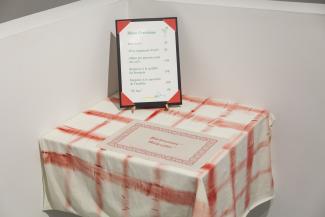
Following discussions begun in 1993, the Festival Accès Asie (FAA) was founded in 1995 by artists Janet Lumb, Bernard Nguyen, Hunt Hoe, Himmat Shinhat, Atif Siddiqi, Salman Hussain, and Bernard Truong. Their goal was to give artists of Asian origin greater visibility in disciplines such as music, the visual arts, dance, and theatre. In 1995, the year of Québec’s second sovereignty referendum, with linguistic and cultural tensions between Québec and Canada as a backdrop, racialized artists were still struggling to break through, and some found themselves having to choose between an Asian artistic path and assimilation by the dominant culture, which was majority white and Francophone. This social and political context set the course for the FAA’s development and evolution.
Janet Lumb notes that in the 1990s, Montréal gave priority to white Francophone artists as it sought to consolidate its Francophone identity. Because the festival operated mainly in English in its early years, it was initially denied provincial funding. Lumb remembers that the festival had to hire white Francophones from outside the community to liaise with Québec funding agencies. Meanwhile, the festival also applied for federal funding. Over the years, the FAA evolved to a bilingual format. Today, funding is secure, and the festival has carved out a place in the city’s cultural scene. For twenty-six years, it has provided a platform for Asian artists from Québec and across Canada to openly express themselves while also being valued for their Asian identity—no small feat in a predominantly white society. The festival’s performers have been able to break down barriers and build a pan-Asian artistic community. For many of the artists, this community is a source of solidarity and pride, allowing them to celebrate their cultural heritage together. Although based in Montréal, the FAA also promotes Asian art throughout Québec.
Contemporary artistic visions
Œuvre de Mary Wong
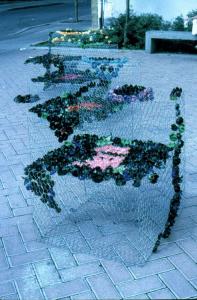
A contemporary Asian visual arts scene emerged in Montréal in the 1990s. Among its exponents was Mary Sui Yee Wong, then a recent graduate of Concordia University’s sculpture program. Inspired by activists exploring questions of identity, she decided to highlight her own Chinese identity in her multidisciplinary work. After a childhood of assimilation into Canadian culture, she used her art to reconnect with her Chinese roots. Her works defy the conventions of Western sculpture and reference elements of Asian culture, for instance through the use of dyed rice or of Chinese characters that remain untranslated.
While today’s Chinese Montréal artists explore a wide range of themes and techniques, certain concerns recur. Their work often focuses on complex identities, belonging, racism, family, the community, and cultural hybridity. A work by Cheryl Sim, director and curator of the Phi Foundation, considers what the cheongsam—a traditional Chinese dress—means to Chinese women of different backgrounds. Sim is pleased to see that her work allows Asian audiences to feel represented, while letting other visitors learn more about Asian realities in Canada.
However, it can still be difficult for Chinese-heritage artists to bring their work to the public. Questions around culture, belonging, and social inequality remain fraught, and addressing them involves a delicate balancing act. It can be a challenge for artists to express pride in their cultural identity without crossing over into exoticism, or to find a platform for their art that has not been constructed with a white audience in mind, or simply to express ideas that question and provoke while still managing to live from their art and achieve success in a society that often marginalizes their voices.
These concerns are at the heart of the recent work of Chinese Montréal artist Karen Tam, whose current curatorial project looks at how Canadian Chinatowns have been represented over time. Many of the images she has compiled were made by non-Asian artists. Tam reappropriates these renderings to construct an art history of Chinatowns, as well as a visual history of the evolution of these communities through waves of discriminatory laws and gentrification.
Today, there are more places in Montréal’s art environment for Chinese-heritage artists to develop and show their work. Cheryl Sim, among others, is helping to increase their visibility through her influential position at the Phi Foundation. She hopes that the current generation will be a source of inspiration for the next generation of Chinese Montréal artists.
成立于1995年,Accès Asie 艺术节是由艺术家林瑞贞和 Bernard Truong 创立,由于魁北克亚裔艺术家往往缺乏曝光率,又被边缘化,表演机会有限,要建立知名度尤其艰巨,该艺术节旨在为亚裔艺术家增加曝光的机会。今年庆祝成立26周年,此双语艺术节成功地为来自各个范畴的艺术家提供了平台,参与的艺术家不仅来自蒙特利尔,有些更是来自全亚洲的二十多个国家。
如今,蒙特利尔华人艺术家有更多的空间来实践抱负。主题和技术极为多样,时亦探索复杂的身份认同,时亦探索归属感问题,主题环绕着家庭、社区和文化等。某些艺术家如余承佳正重新采用东方主题的概念,希望能在魁北克社会中为自己开拓一席之位。
—
La traduction en chinois simplifié a été faite par Serena Xiong (熊吟) et révisé par Philippe Liu (刘秦宁).
成立於1995年,Accès Asie 藝術節是由藝術家林瑞貞和 Bernard Truong 創立,由於魁北克亞裔藝術家往往缺乏曝光率,又被邊緣化,表演機會有限,要建立知名度尤其艱鉅,該藝術節旨在為亞裔藝術家增加曝光的機會。今年慶祝成立26週年,此雙語藝術節成功地為來自各個範疇的藝術家提供了平台,參與的藝術家不僅來自滿地可,有些更是來自全亞洲的二十多個國家。
如今,滿地可華人藝術家有更多的空間來實踐抱負。主題和技術極為多樣,時亦探索複雜的身份認同,時亦探索歸屬感問題,主題環繞著家庭、社區和文化等。某些藝術家如余承佳正重新採用東方主義的概念,希望能在魁北克社會中為自己開拓一席位。
—
Traductrice : Wai Yin Kwok.
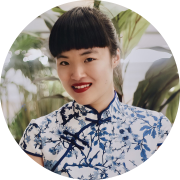
![Affiche annonçant l’ouverture officielle des Archives lesbiennes Traces le jeudi 14 avril [1983].](https://ville.montreal.qc.ca/memoiresdesmontrealais/sites/default/files/styles/chm-blog-album-article-teaser/public/affiche_ouverture_archives_traces_1983_violette.jpg?itok=ATQiI7eA)
